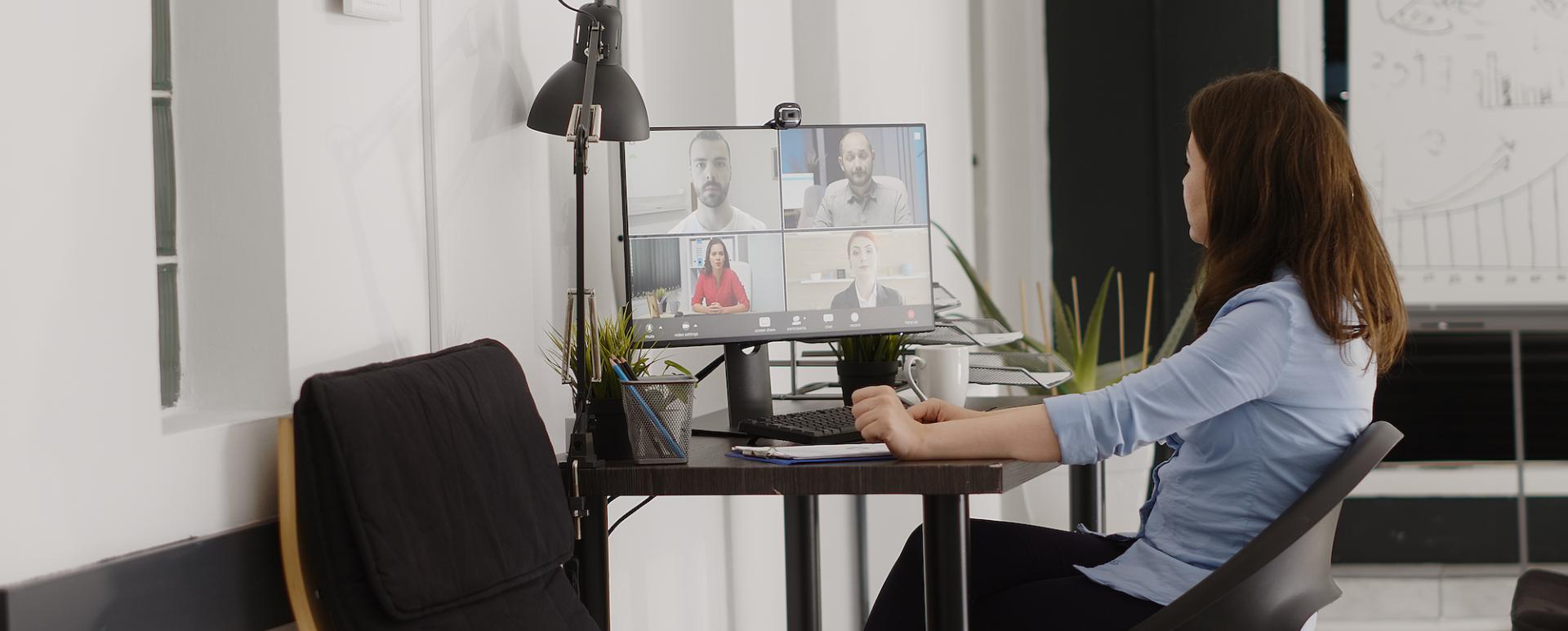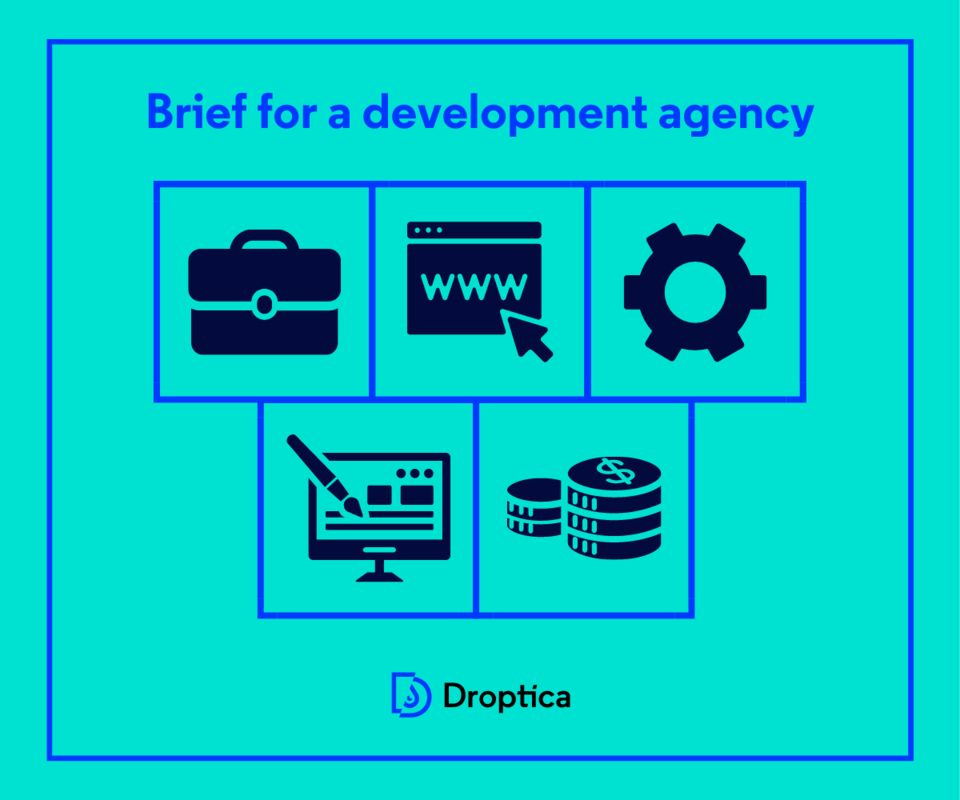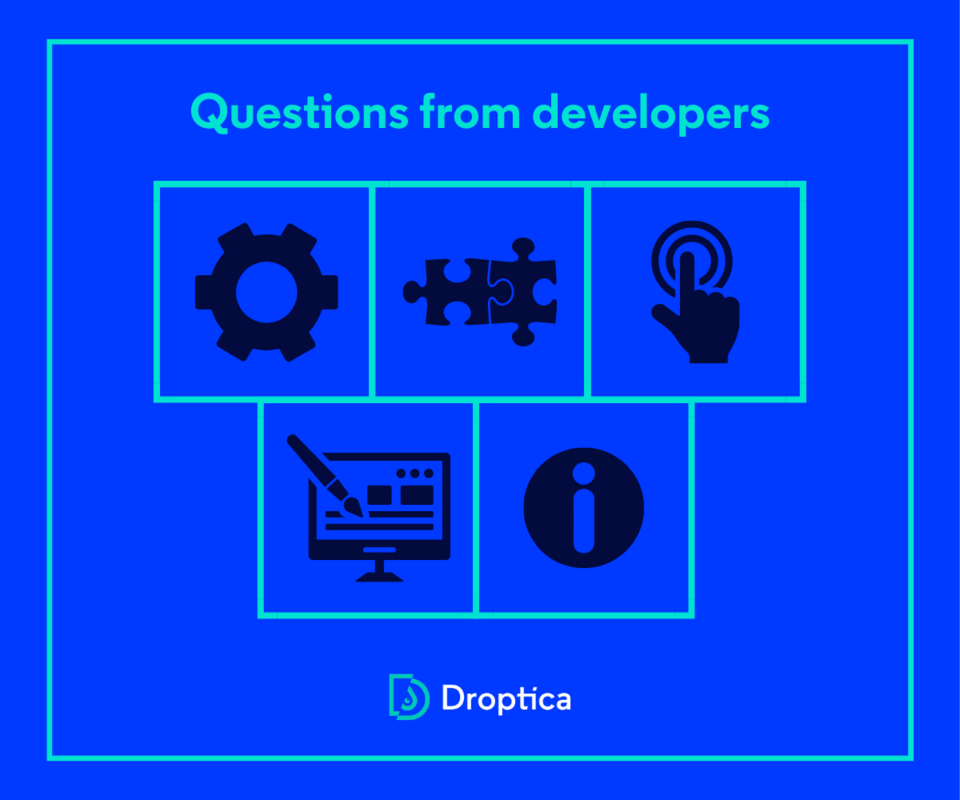
Customer Journey Stages at Droptica. From Sending a Form to Contract Signing
At Droptica, we rely on processes. One of them is the cooperation model at the initial stage, even before the start of the service. We want you to know everything that's involved in building or rebuilding your business website. On the other hand, this is also the time for us to acknowledge your expectations. The following article explains how we communicate, what you, as a client, can expect during our discovery calls, and what the next meetings are for.
What is B2B customer journey at Droptica and why is it important?
The customer journey at Droptica is a process that has been developed over the years and consists of several key elements:
- Filling out the contact form, that is outlining the project topic and expectations.
- A meeting (also online) between the client and the sales team to get acquainted and preliminarily discuss the project assumptions and define the next steps.
- A conversation with the development team, during which Droptica experts propose specific solutions and ask additional questions.
- Project estimation.
- Contract signing.
- Getting to know the project team.
We describe the above elements later in the article. At this point, it’s worth noting that the customer journey at our Drupal agency is a process that allows us to understand your needs as a client in terms of the website functioning and your business strictly.
Each step makes it possible to clarify the mentioned expectations for specific solutions. The more information our project managers and developers acquire, the more efficiently and in time they will complete the project. As a result, you’ll be able to launch your project faster, thus saving costs.
Let's look at how the stages of customer journey work at Droptica.
1. Sending a request with a brief via the contact form
Filling out the form is the first step of the customer path. At this stage, it’s worth describing the most relevant expectations. To do this well, a brief to the development agency comes to your aid, allowing you to convey your concept concisely.
The brief should include such information as:
- business characteristics (e.g., industry, addressees of the offer),
- the purpose of building or redesigning the website (along with its URL): the more specific (e.g., increasing conversions, increasing brand awareness), the better,
- functionality: with an indication of what elements are currently on the website and what you want to deploy (e.g., integrations with external marketing tools, new payment method implementations),
- graphic design: a proposal of your vision for the business web page (e.g., created using shapes in a Google document or in the form of links with references to other websites that have caught your attention),
- budget: by defining it, we’ll be able to estimate what kind of work we can do and in what time frame.

2. Making contact and arranging a meeting
At Droptica, we read each form and brief carefully so that we can best prepare for the subsequent conversation, work out the questions, and be able to determine what we can do and how we can do it as part of the project.
We respond to your request quickly, within 1-3 hours, to confirm that we got your message and schedule the first meeting. Sometimes we also ask additional questions at this stage. We are familiarizing ourselves with your information by the time of the meeting.
We also help write documentation or develop mockups for complex projects for a fee during our design workshops with the client. Importantly, once the workshop is over, the materials remain in your possession, even if you choose not to work with us.
When your idea for a website is not extensive and requires only minor changes, there is no need to prepare a brief. We are the ones who will then develop a list of questions and arrange downstream meetings with our technical team to finalize the details.
3. Discussing project details during the discovery call
The discovery call is a special moment for us because we have the opportunity to get to know you a little better for the first time. During the meeting, we discuss the information you previously gave us. We ask questions to recognize your business better, understand your goals and the functionality you want to implement on the web page. We also talk about the budget.
In addition, during the meeting, we talk about how we can carry out the various tasks related to the project. You learn how we can use the services we offer to meet your specific expectations. We can also show you our previous analogous implementations and tell you what our possible future cooperation will look like in terms of communication (we work in SCRUM, which translates into benefits for your project).
It’s essential for us that after the meeting, you know the answers to all your questions and how we’ll implement your project after the cooperation.
4. Establishing the following customer journey steps
Every project is different. Each requires a personalized approach. Therefore, if necessary and based on an initial meeting, we establish a plan for further action.
It may be, for example, that in addition to taking the standard steps as described here, we’ll want to talk to your employees who will ultimately use the new functionality. The knowledge we’ll gain from them can be an important variable in the project implementation process.
On the other hand, the extra time may also be helpful to you if you want to ask our specialists questions about the website from the client's perspective.
5. Meeting with developers or defining the project scope
Organizing a meeting with programmers is one of the most important stage of customer journey process. Developers will have to translate your purpose into the programming language. You can therefore expect questions about:
- functionalities,
- integrations with other systems,
- the interactions with users, that you expect,
- the appearance and layout of the website,
- the information structure (in this case, we can ask you to send us content, such as texts, images, videos, etc.).

During the meeting, you’ll learn about the frameworks and tools the developers plan to use and what benefits you can gain by doing so. They’ll also discuss navigation, categories, and tags with you and suggest how these elements should be organized and presented on the website.
It’s worth noting that at this stage of customer journey will be addressed issues related to your web page support after the end of the project. Thus, regarding the specifics of your website, you’ll get information on security, necessary updates for its proper maintenance, and related costs.
If there are technical people on your team, it would also be good for them to attend this meeting.
6. Project estimation
The information obtained and the arrangements made at previous path stages make it possible to estimate the project accordingly. It should be emphasized that previous efforts and a substantively prepared brief pay off in the form of the most precise cost assessment possible.
Why "possible?" Because the estimation of a software project will never be 100% accurate. During the project, unexpected variables may arise (e.g., additional integrations, changing parts of the design), which may change the cost. You also have the right to modify, for example, some functionalities.
Above all, however, the goal of the quote is to determine the budget within which we’ll try to fit, and thanks to the aforementioned SCRUM work and transparent reports, you’ll be able to react in real-time to the project's progress and costs. This approach speeds up adaptation and increases the ability to develop even better ideas to complete the project in less time. The fewer hours we spend on the work, the less you’ll pay, and if you want to increase the scope of our tasks, we can always update the time estimation, even during the project.
As business and technical consultants, we help you achieve the best possible results for your project. During the first quote, we make sure we meet your budget criteria. We remain flexible, advise, and can negotiate the estimation so that you’re 100% satisfied before signing the contract.
7. Refining a project estimation
We know from our many years of experience working with clients from all over the world that arrangements for the price of a service often continue after a single meeting. It takes time to make a decision. So we remain open to client suggestions and, if necessary, look for alternatives to previous proposals.
So you can be sure we won’t leave your project without a B option. We’ll try to adapt our services to your budget. Important at this stage is a complete openness and clear articulation of expectations.
8. Contract signing
After the final definition of the scope of services, we can proceed to signing the contract. It’s worth mentioning at this point that to speed up this stage, we’ve relied on digital methods without preparing unnecessary paper scans and sending them by traditional mail.
In order to move forward with your project as quickly as possible, we use online tools such as Autenti and DocuSign to complete the document.
9. Meeting the project manager and the project team
A meeting with the team and the project manager precedes the start of work. A good project manager is the key to completing the project on time and on budget. For this reason, we’re keen for you to get to know this person well, to have contact, and to be able to address your questions and suggestions at any time.
From a business perspective, your project will also be led by a dedicated Service Delivery Manager, whose responsibilities include strategic evaluation, consultation, and long-term project development.
You’ll also be able to address your questions during the collaboration with individual developers, for example, through a dedicated channel on Slack. You’ll also have the opportunity to participate in weekly team meetings, during which we discuss what has been done over the past few days and develop an action plan for the following days.
In addition to getting to know the project team, this type of meeting is also intended to show how we’ll collaborate, communicate, and report on the project's progress.
Customer journey stages at Droptica - summary
Going through the customer journey stages step by step gives mutual benefits. Thanks to this transparent cooperation model, we, as a software development company, know everything about your vision for the website you want to build or redesign, and you gain confidence that its realization will be based on specific solutions and concerning the specified budget. Do you have an idea for your website development? Make it happen with us. Now you know what the customer journey stages look like at Droptica - from filling out the form to signing the contract.













